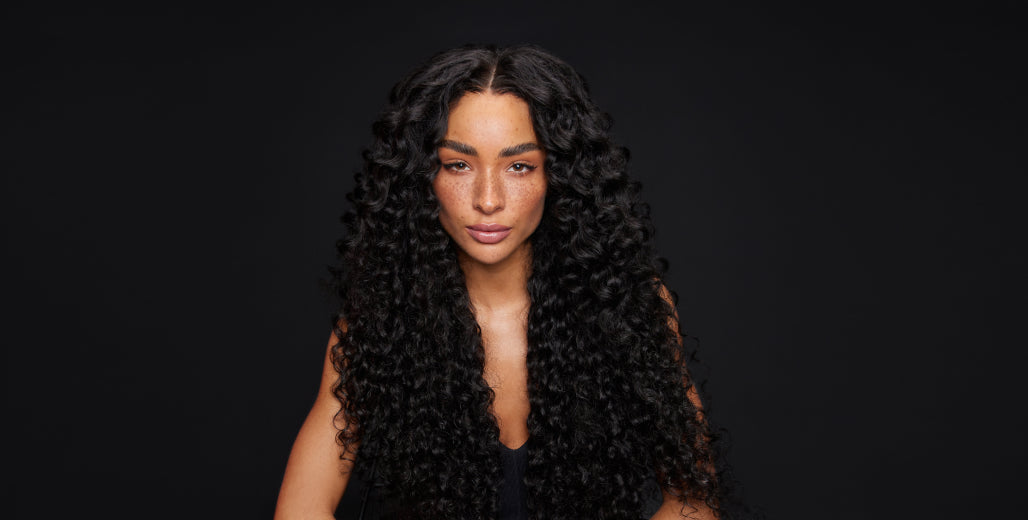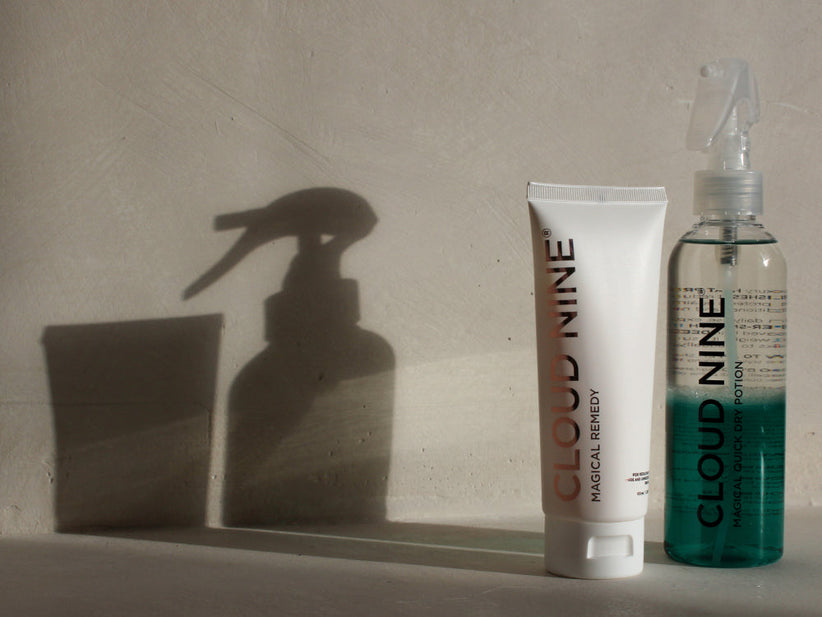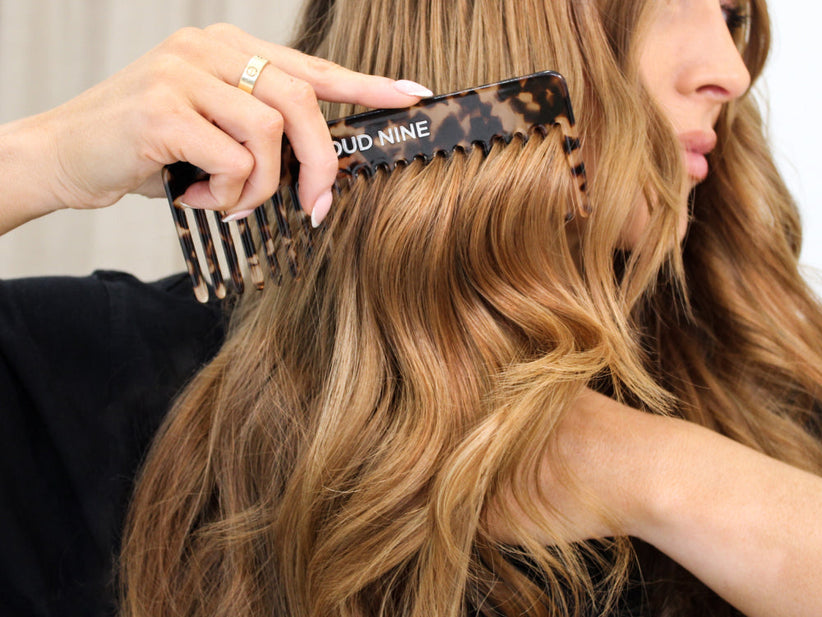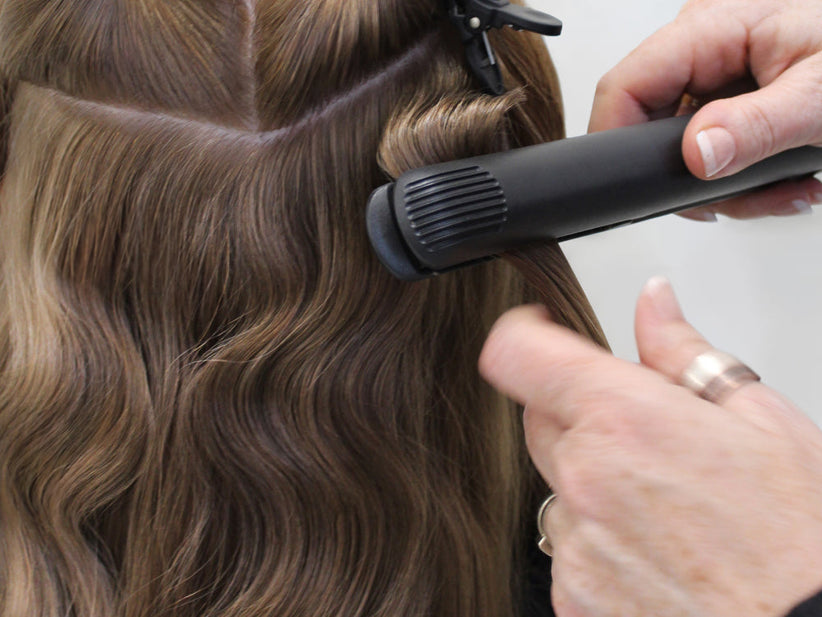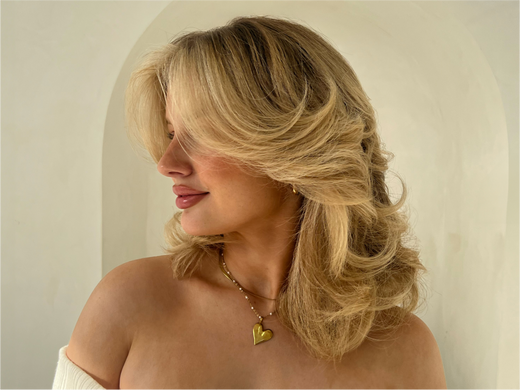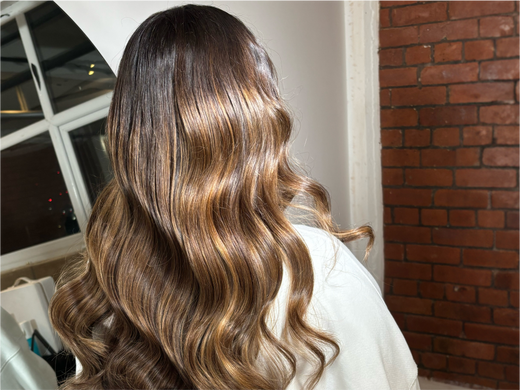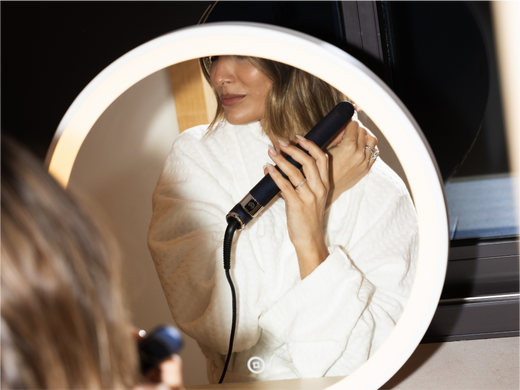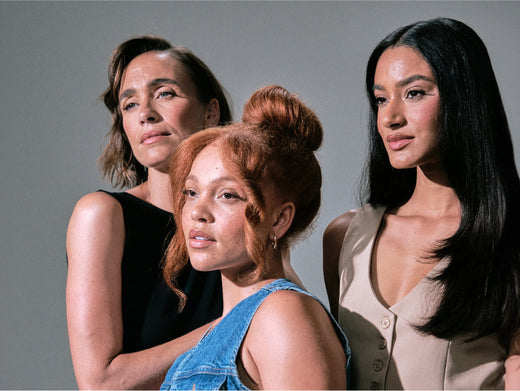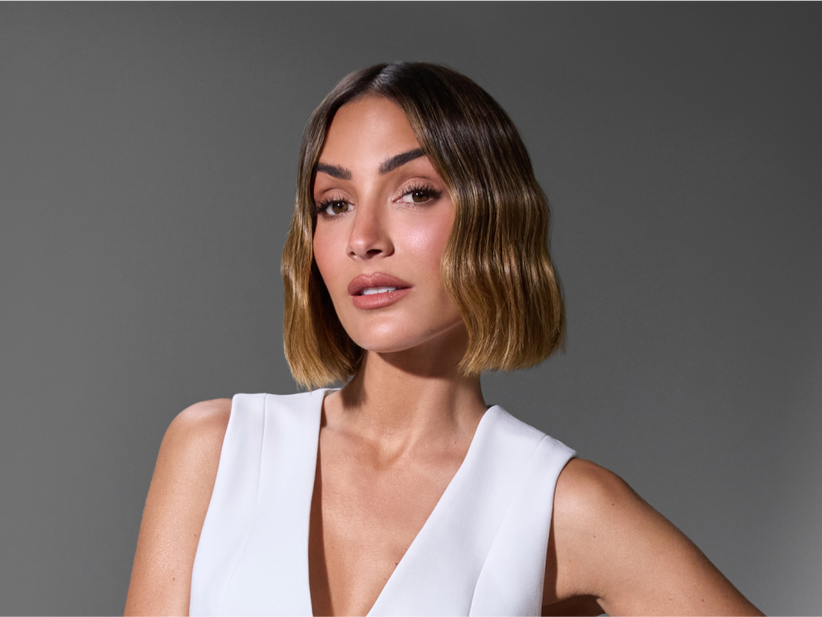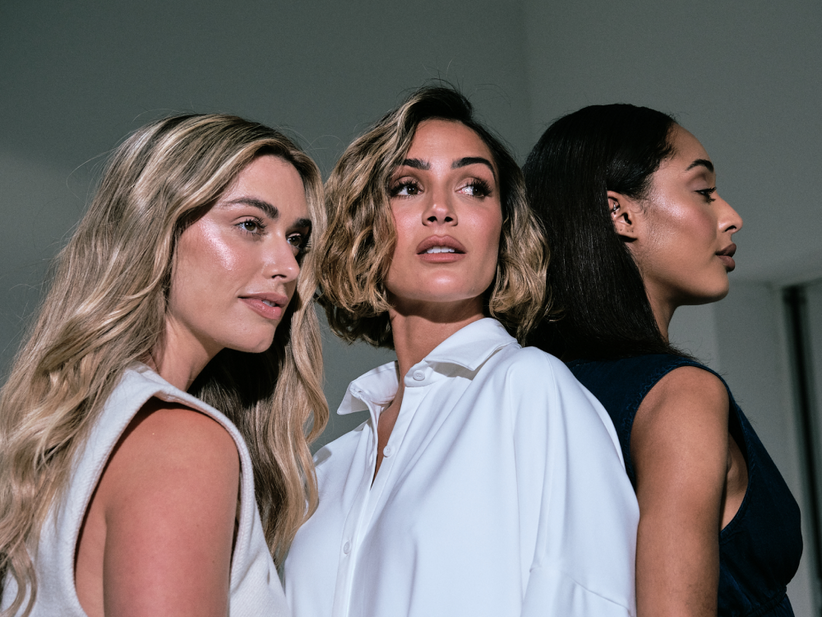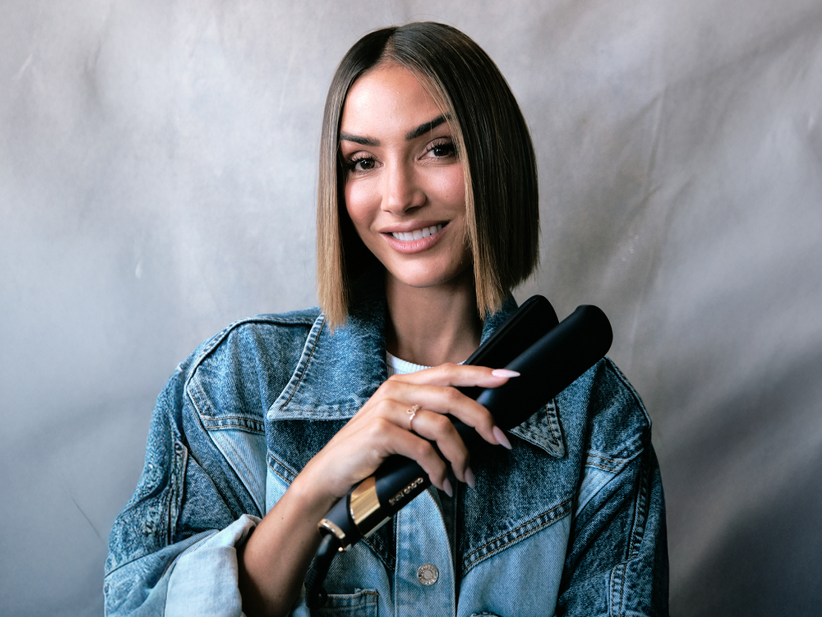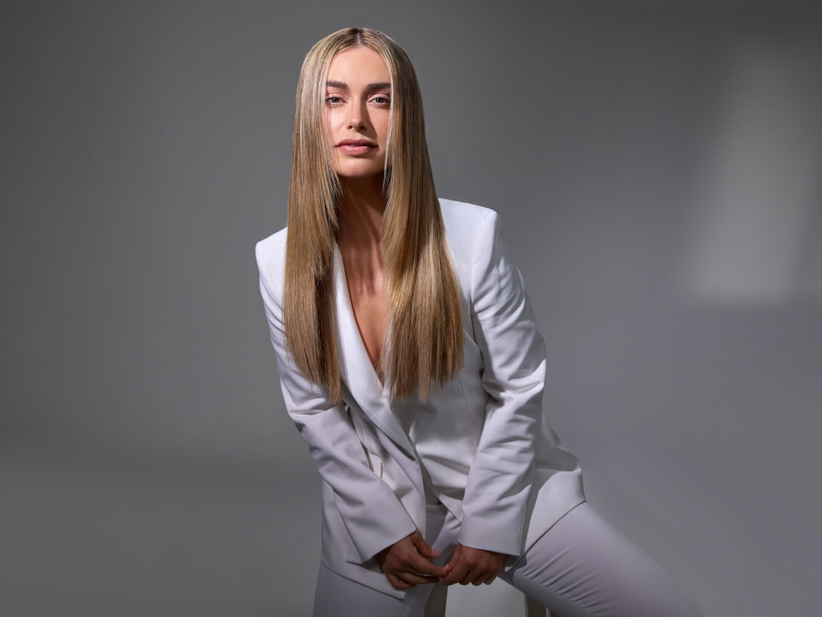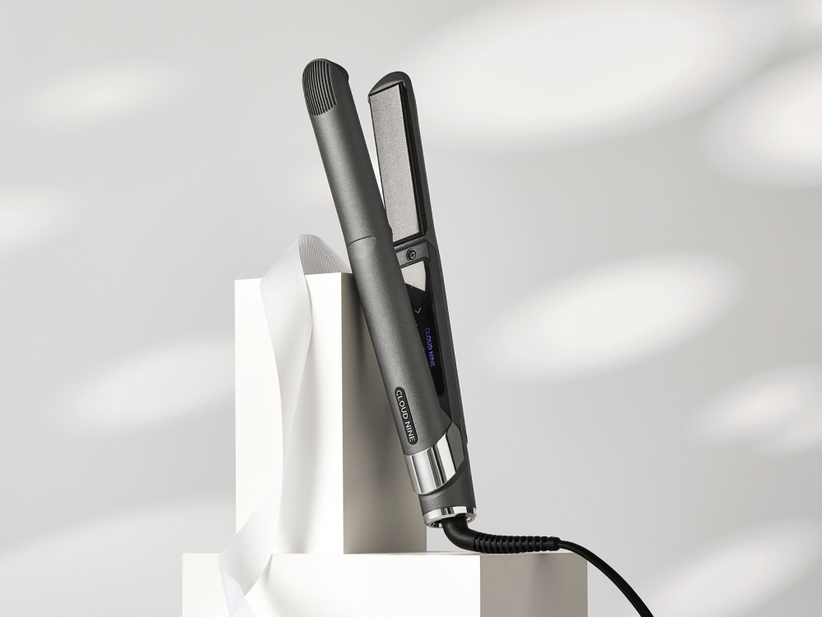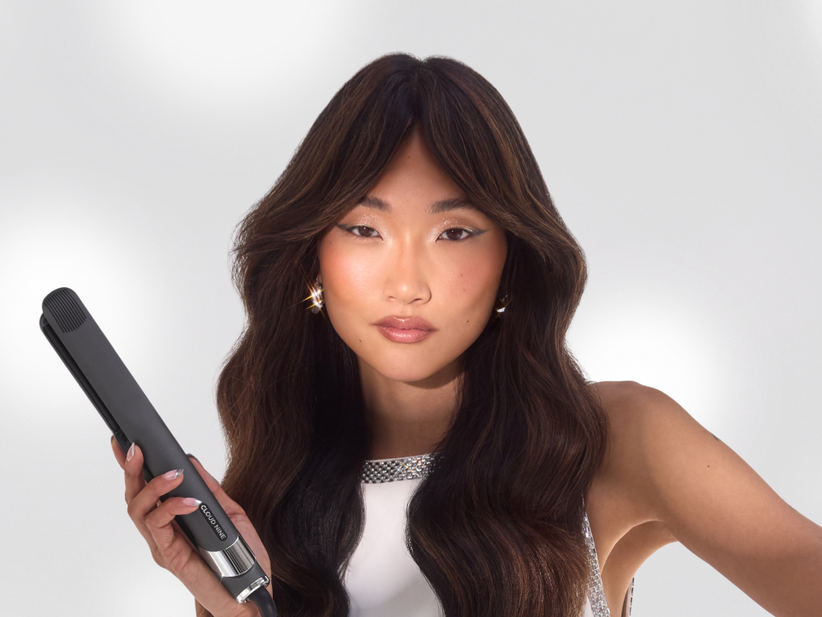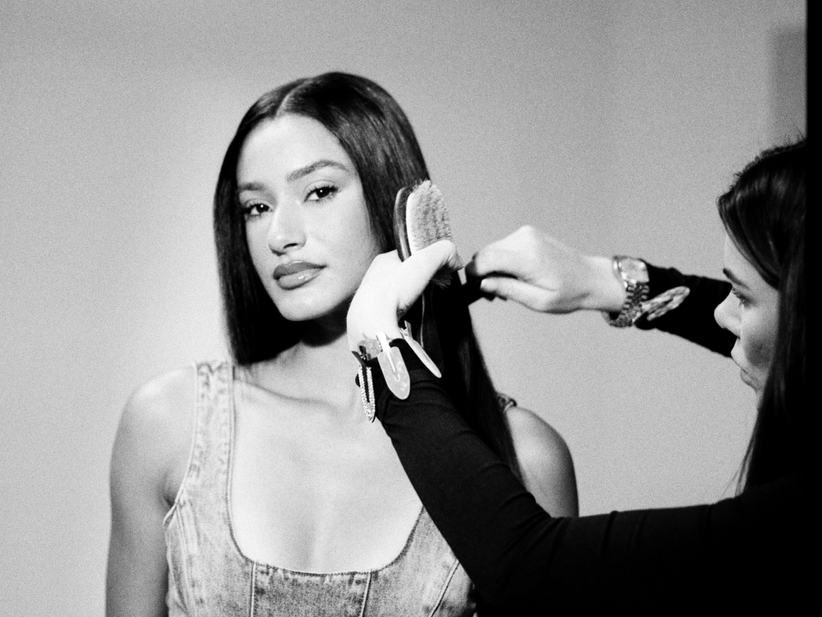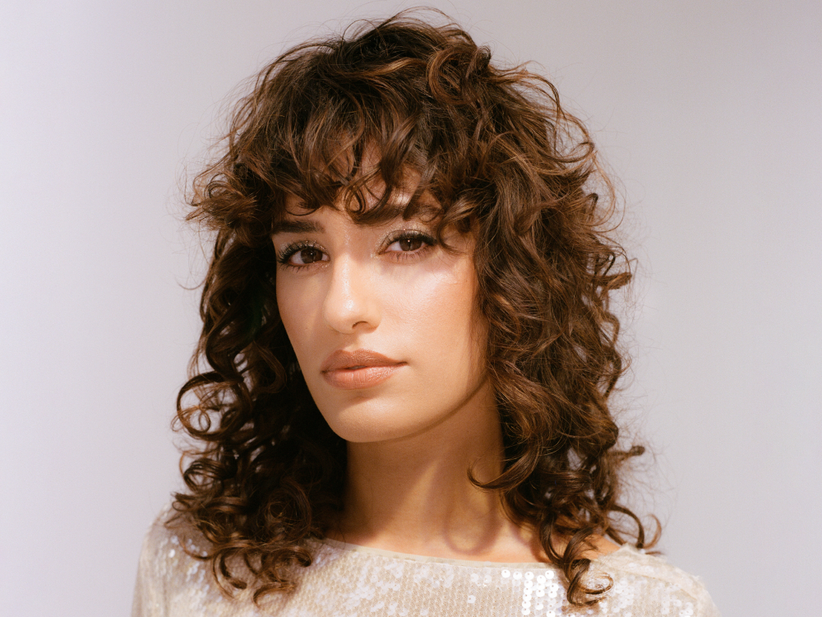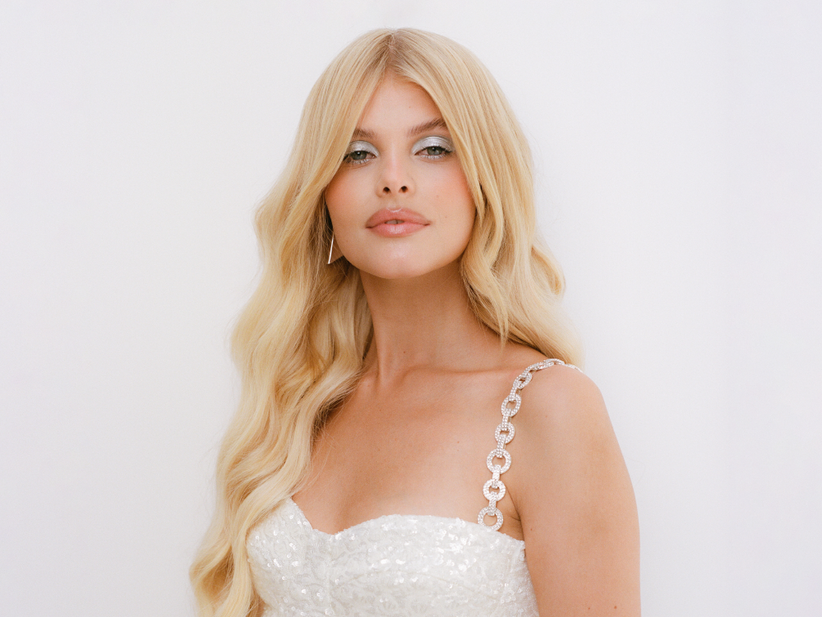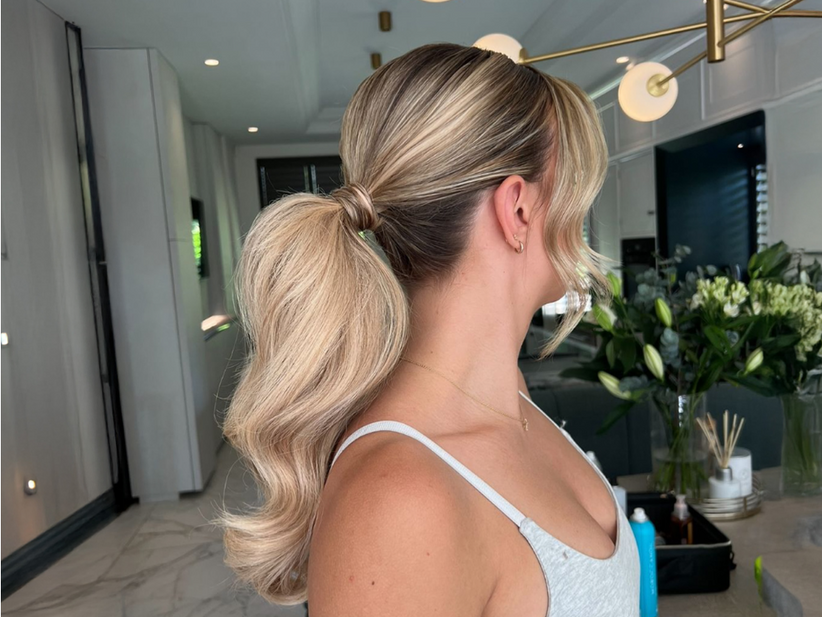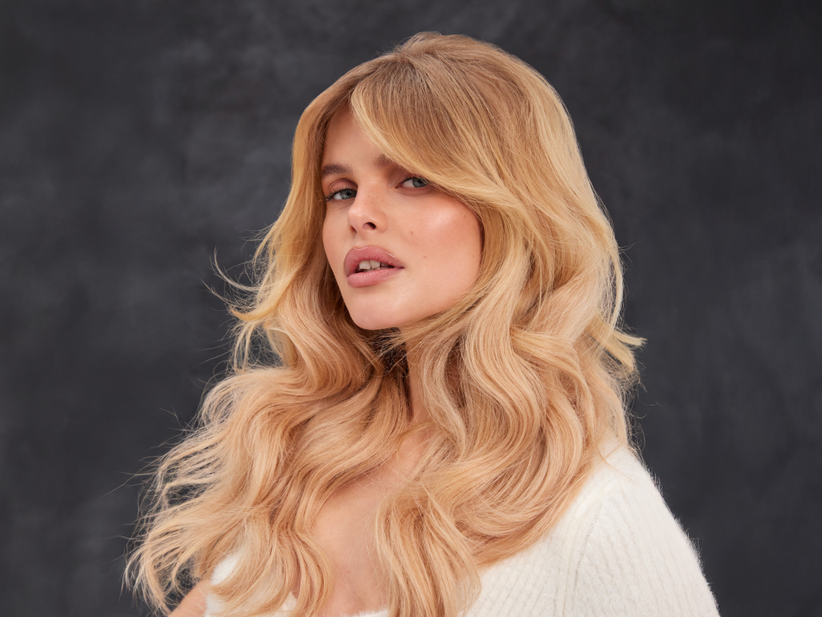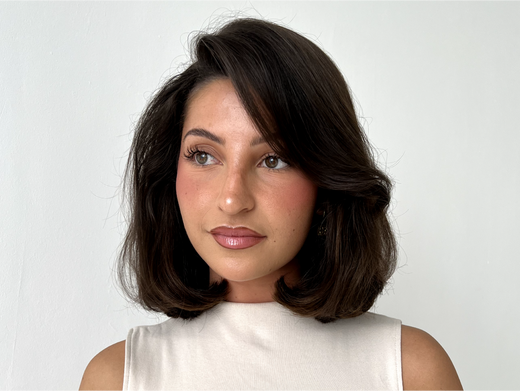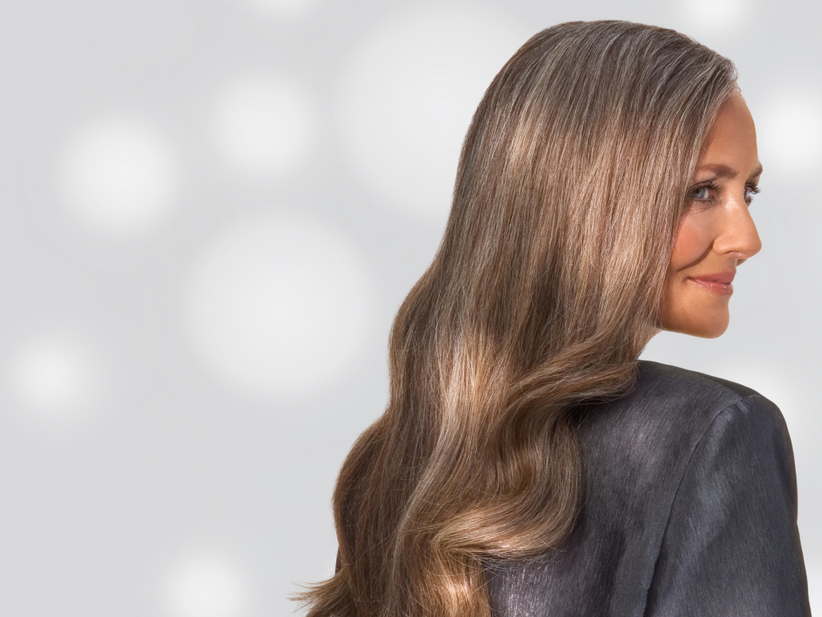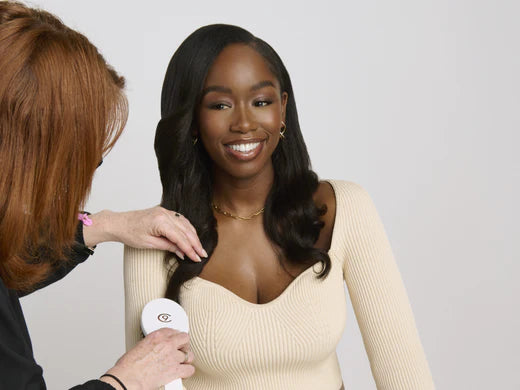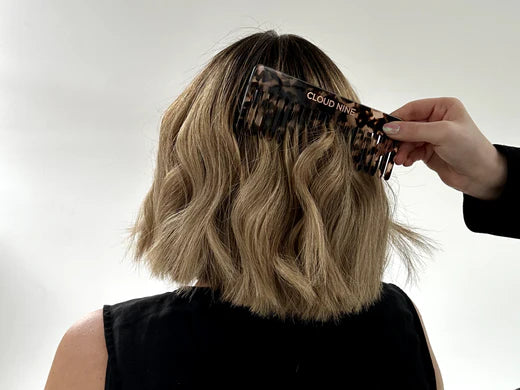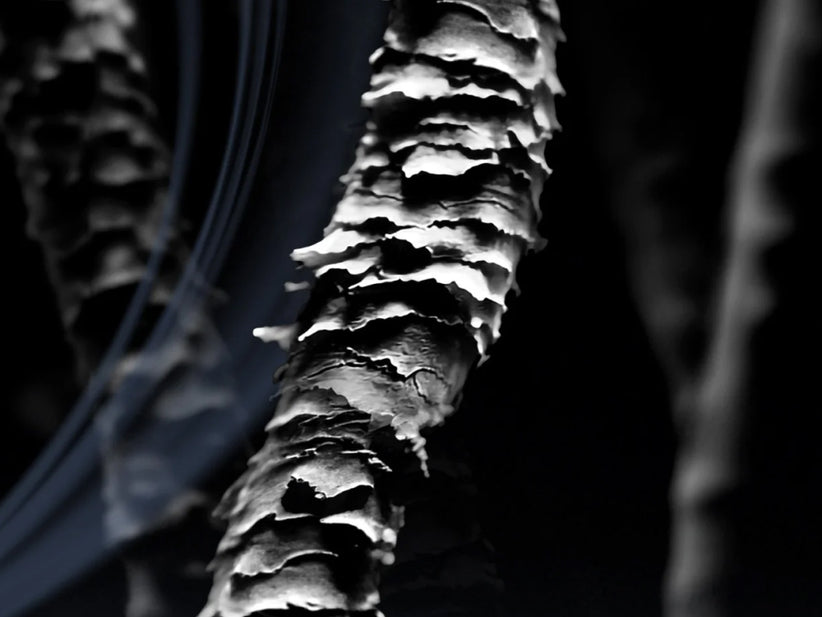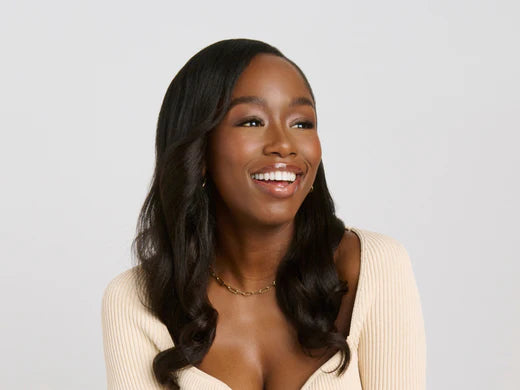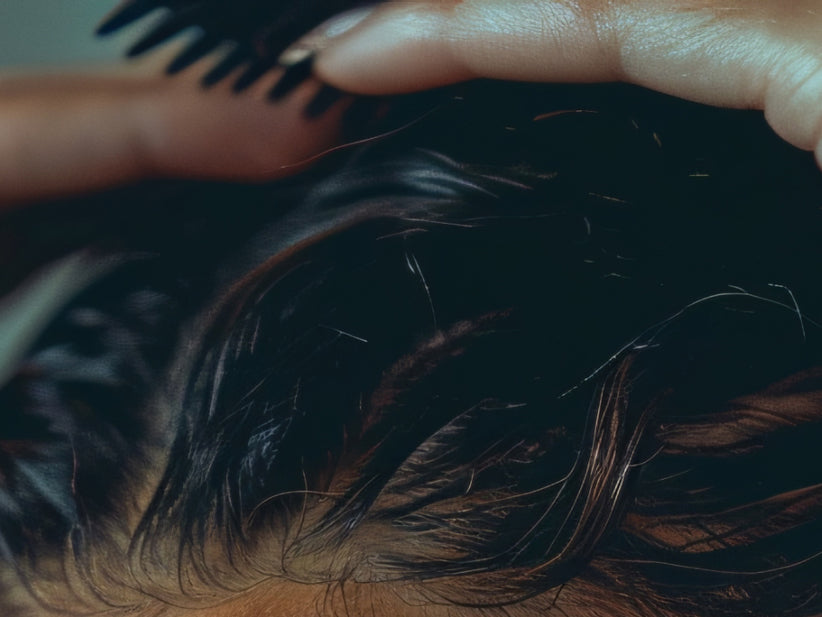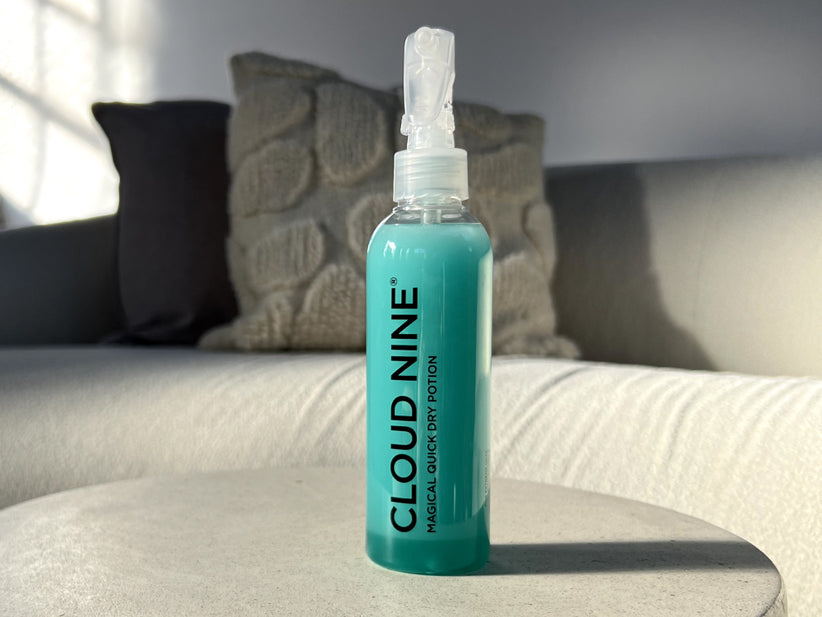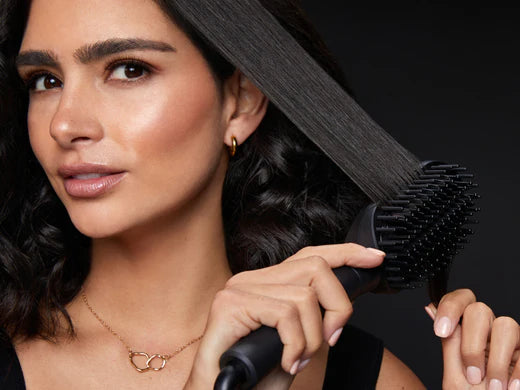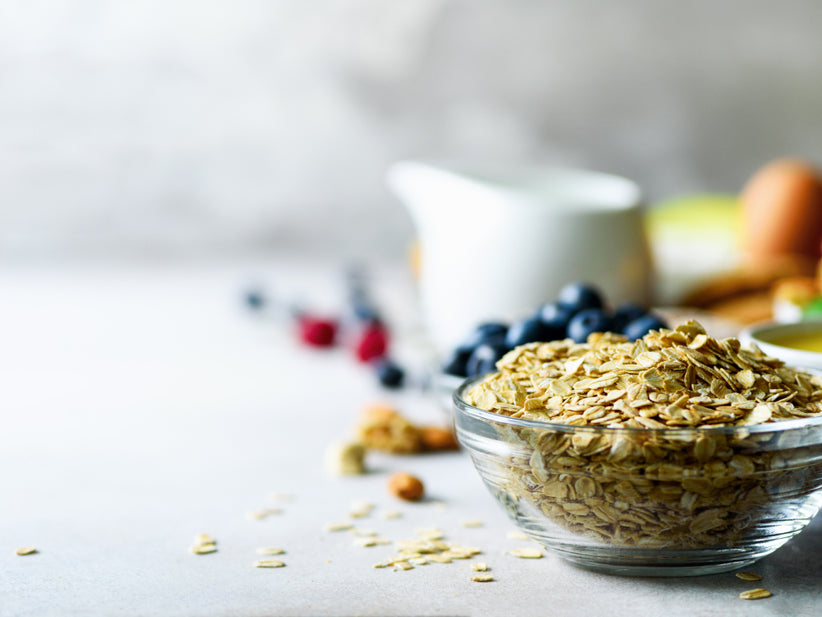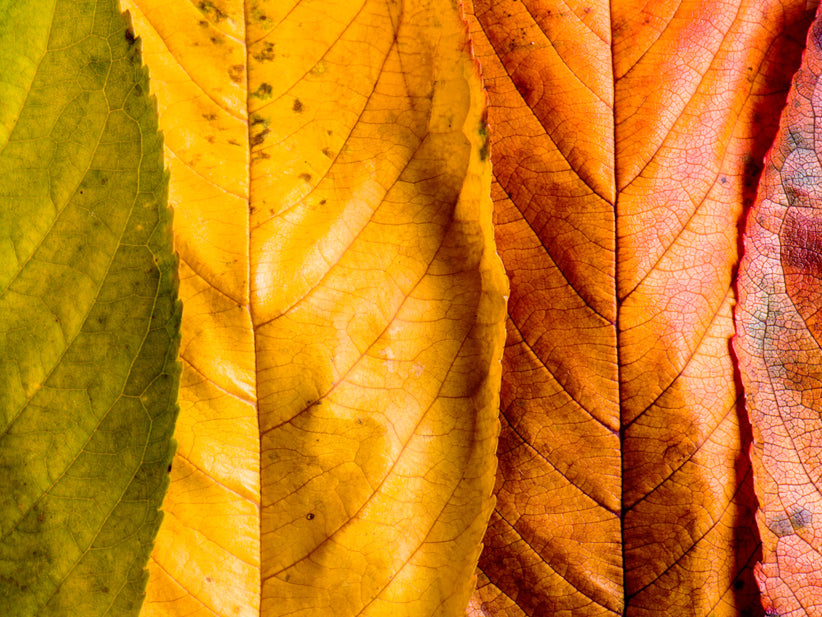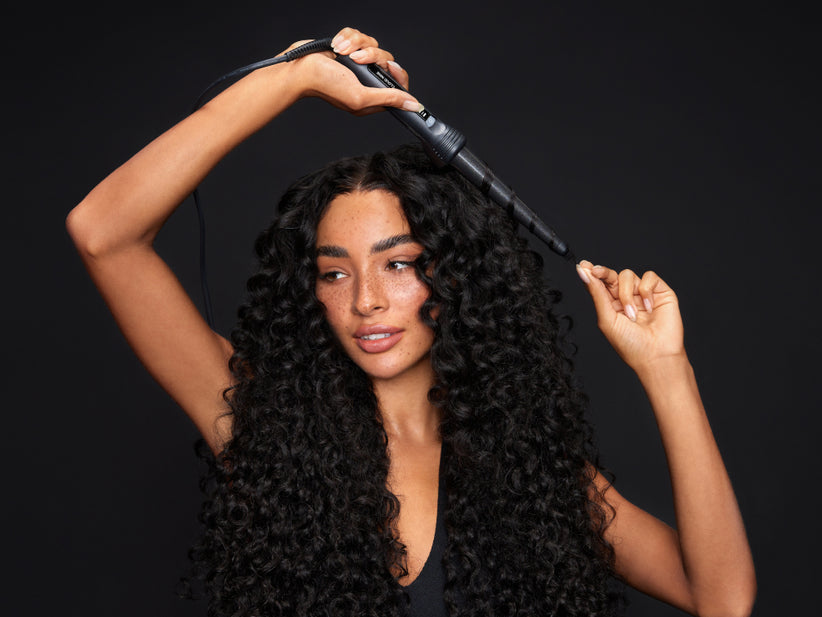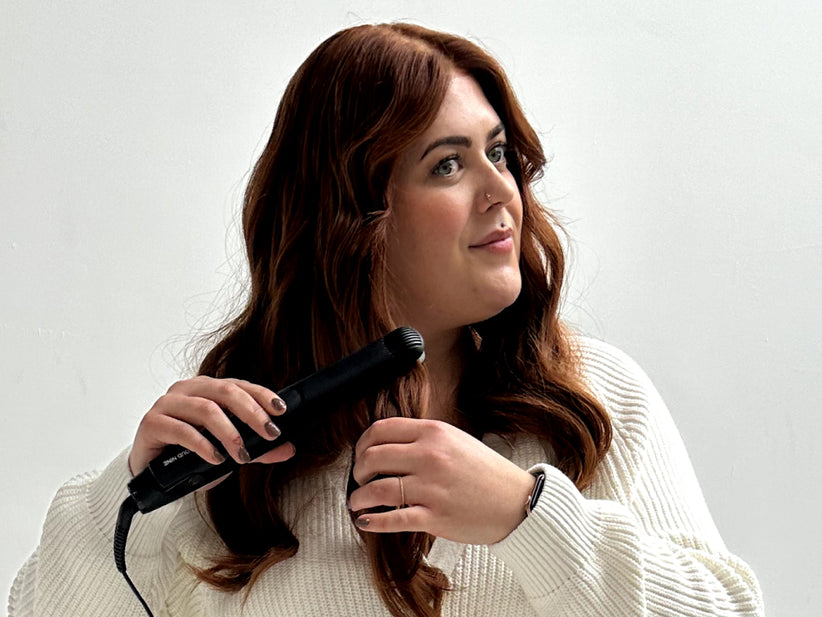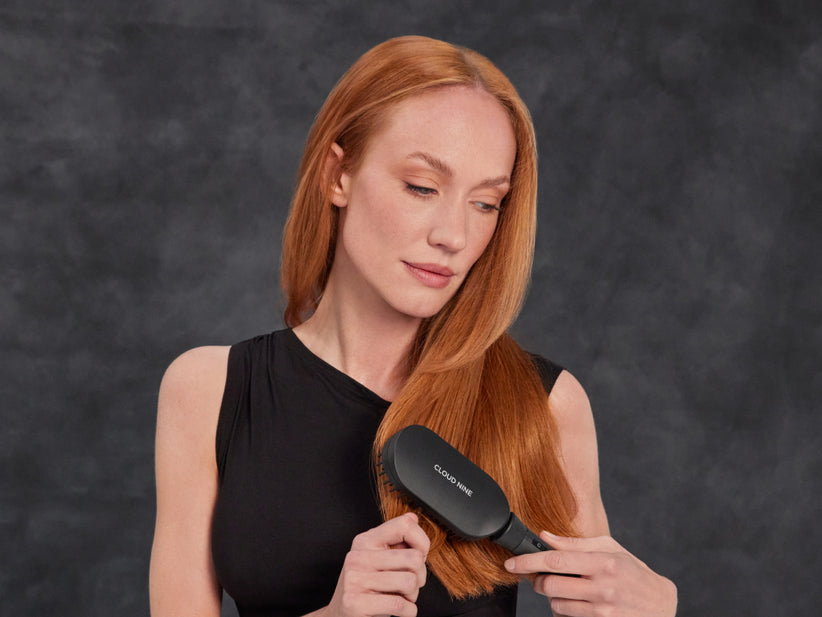At CLOUD NINE, we're obsessed by natural curls. Whether they’re tight or loose, neat or messy, springy or relaxed – we just can’t get enough. While they may appear effortlessly beautiful, we know the challenges that come with styling and maintaining your natural curls.
That's why we've created this how-to guide, designed to help you understand your hair type and master the art of care and styling. For your best hair yet. A lot of our curl tips can be applied to several different curl types, so feel free to glance through the advice for all curl types – not just your own – to see the variety of tips and tricks we’ve pulled together.
WHAT ARE THE DIFFERENT CURL TYPES?
Before you can style your curls, you need to know which curl type you have been blessed with. To work out your curl type, our Group Education Manager, Marie Nieuwoudt, suggests washing your hair with shampoo and conditioner, then leaving it to dry naturally – without any additional products. Once dry, look at your hair in the mirror and use our Temperature Calculator, which not only gives you your hair type (from 1a to 4c), but gives you the optimum temperature for using heated styling tools.
“Knowing your hair type is key for proper care and styling.” – Marie Nieuwoudt, CLOUD NINE Group Education Manager
Your natural curls can be categorised into the following:
- Type 2a: Loose waves
This natural hair type tends to have loose, s-shaped waves. Waves are relatively fine and not very defined.
- Type 2b: Slight waves
Type 2b waves are more defined compared to 2a. Waves tend to form a more distinct s-shaped pattern.
- Type 2c: Classic waves
If your natural hair is type 2c, your waves are more pronounced and tend to form a clear s-shape from roots to ends. Type 2c waves may have a tendency to frizz in humid conditions.
- Type 3a: Loose curls
If your natural hair type is 3a, your curls will be well-defined with a loose, spiral pattern. Type 3a curls are larger in circumference compared to type 3b and 3c.
- Type 3b: Tighter curls
Type 3b curls are tighter and springier than type 3a, forming a more defined spiral pattern. Hair tends to be voluminous and may frizz in humid weather.
- Type 3c: Curly-coily
Curls are tightly packed and form corkscrew-like spirals. Type 3c hair tends to be dense and prone to shrinkage.
- Type 4a: Tightly coiled curls
Sometimes called ‘afro’ textured hair, type 4a curls are tightly coiled with an 's' or 'z' pattern. Hair tends to have a lot of volume and shrinkage.
- Type 4b: Coily
Another afro hair type, these coils are tightly packed and have a zig-zag pattern. Hair tends to be densely packed and may shrink significantly.
- Type 4c: Coily zig-zags
Type 4c hair has a very tight curl pattern with minimal definition. Coils form tight, densely packed zig-zags. Hair is highly prone to shrinkage and requires significant moisture and care to prevent breakage.
For more information about hair types and how to care for all hair types, visit our expert guide to hair types by hair expert Marie Nieuwoudt.
KEY CURLY HAIR TERMS
The language of haircare can be overwhelming, which is why we’ve jotted down six key words that will help you understand more about your curly hair, how to care for it, and how to style it:
- Cuticle: The outer layer of your hair. High porosity hair readily absorbs moisture, while low porosity hair resists it – often resulting in dryness.
- Follicle: These tiny tube-like structures on your scalp shape the texture of your hair – oval follicles lead to straight hair, while round ones often create curls.
- Texture: This refers to the thickness of individual hair strands, categorised as fine, medium, or coarse.
- Porosity: Porosity is the term given for how effectively hair absorbs and retains moisture, categorised as high, medium, or low.
- Density: This refers to the number of hair strands on the scalp, classified as low, medium, or high.
- Curl pattern: Your curl pattern refers to the natural shape of your hair, from straight to coily and everything in between.
TYPE 2A
What are type 2a curls?
Type 2a curls are on the wavier end of the spectrum, and look like loose waves more than curls. These waves are typically fine and have a gentle, subtle s-shaped pattern and are great for a relaxed, loose look. Type 2a hair is prone to becoming straighter in humid conditions and may lack volume.
How to care for type 2a curls
Caring for 2a waves can be challenging due to their tendency to lose shape and frizz. Follow our tips to help you care for them:
- Alternate between two shampoos: Choose two shampoos – one protein-rich and one clarifying (cleansing) and alternate between them to prevent product build up. Couple with a lightweight, protein-rich conditioner to help strengthen your hair.
- Use dry shampoo: Over-washing your hair can dry out your scalp, so combat oiliness between washes with dry shampoo instead. Dry shampoo is like magic – it absorbs grease and adds volume to flat hair, perfect for your type 2a waves.
- Brush your hair regularly: Apply a leave-in conditioner like the CLOUD NINE Magical Remedy before brushing to protect your 2a hair. Start at ends and work gently upwards to prevent breakage. Go for wide-tooth combs or something like our Luxury Dressing Brush for gentle detangling.
How to style type 2a curls
For type 2a curls, the key is to keep things light and let your natural waves shine.
- Use lightweight products: Apply styling products sparingly to avoid weighing down your hair.
- Air dry or diffuse: Use your diffuser on the lowest heat and speed setting to avoid creating extra frizz. Check out our comprehensive guide to using a hair diffuser for more tips.
- Style upside-down or with root clips: This will help add volume at the roots. Think about short or mid-length haircut options that enhance your waves without removing them entirely.
“Avoid overloading your hair with heavy products – less is more to prevent weighing down your waves.” – Marie Nieuwoudt, CLOUD NINE Group Education Manager
TYPE 2B
What are type 2b curls?
Type 2b curls fall between straight and curly, displaying a prominent s-shaped wave pattern – think natural beachy waves. If you have type 2b hair, your roots may be straighter and midsections curlier, making it more susceptible to frizz.
How to care for type 2b curls
Like type 2a curls, 2b curls need light hair products so as not to weigh them down, but may need a little extra definition from a serum or finishing spray to prevent frizz. We have three top tips for you below:
- Limit shampooing: Wash your 2b hair 2-3 times weekly to prevent over-drying and frizz. Opt for sulphate-free products to maintain moisture balance and minimise frizz.
- Detangle gently: Fight tangles and knots with a wide-toothed comb to minimise breakage. Detangle with a moisturising leave-in conditioner to preserve your natural waves and reduce frizz.
- Plop your hair: After applying lightweight styling products, try "plopping" your hair by wrapping it in a microfibre towel or cotton t-shirt. This method encourages curl formation and reduces frizz as your hair dries.
How to style type 2b curls
Although type 2b waves are stunning, they come with their challenges. Prone to frizz and tangles, they need some TLC to help them look their best:
- Dry with a diffuser: Enhance your natural waves with a diffuser, adding movement and defining your s-shaped curls beautifully. Try our Airshot Pro hair dryer which comes with a diffuser attachment – perfect for achieving tousled beachy waves.
- Go for a medium-length haircut: Mid-length cuts are perfect for type 2b hair – if it gets too long, it can flatten out. Check out these 30 hairstyles for mid-length hair for haircut ideas.
- Leave it alone: Once your hair is dry and styled with a light finishing serum, avoid touching it too much to prevent frizz. Instead, use your fingers to gently separate any clumps of curls for a more defined look.
“Like type 2a, type 2b waves require careful product layering to help hold its natural curl.” – Marie Nieuwoudt, CLOUD NINE Group Education Manager
TYPE 2C
What are type 2c curls?
Still in the ‘wavy’ category, type 2c are the waviest waves in the type 2 category. 2c curls are s-shaped with some strands forming more corkscrew-style curls, particularly the lighter strands around your face or hairline.
How to care for type 2c curls
- Protect your 2c curls: Sleep on a silk pillowcase to reduce friction on your curls while you sleep.
- Pineapple overnight: Another way to protect your curls overnight is to gather your hair into a loose, high ponytail on top of your head (resembling a pineapple) and securing it with a CLOUD NINE silk scrunchie. This helps prevent flattening and maintains curl definition overnight.
- Refresh with water and product: Between wash days, refresh your curls by lightly spritzing them with water mixed with a leave-in conditioner or curl refreshing spray. Scrunch the product into your curls to revive them and reduce frizz, giving your hair a fresh look without needing to wash it again.
How to style type 2c curls
Your type 2c curls will definitely need some curl-friendly products to help them stay frizz-free and manageable.
- Define your curls: Enhance your natural curl pattern by using curl-defining products such as creams, gels, or mousses. Apply these products to damp hair and gently scrunch them in to encourage curl formation and reduce frizz.
- Handle your hair gently: Type 2c hair can be delicate, so handle it with care. Avoid over-brushing or combing when dry, as this can cause frizz and disrupt your curl pattern. Instead, detangle gently with a wide-tooth comb or your fingers when wet, starting from the ends and working your way up towards your scalp.
- Visit a curl specialist: If you want to take your hairstyle to the next level, go for a haircut from a curl specialist who will cut your hair in the perfect way to complement your wave pattern and hair density.
“Choose a gentle shampoo to prevent greasy roots and use dry shampoo sparingly to refresh between washes.” – Marie Nieuwoudt, CLOUD NINE Group Education Manager
TYPE 3A
What are type 3a curls?
Type 3a hair is made up of loose spirals similar in thickness to a pencil and is easily straightened. The curls have a fine to medium texture with minimal body or volume, often appearing somewhat flat compared to 3b and 3c hair. Dryness is a common challenge for 3a curls due to the curl pattern preventing natural oils from reaching the ends of the hair, making it more prone to dryness and breakage.
How to care for type 3a curls
- Try a pre-shampoo treatment: Apply a nourishing pre-shampoo treatment to boost your curls' moisture levels.
- Say no to sulphates: Sulphates strip your hair of its natural oils, leaving it dry and prone to damage. Avoid shampoos containing sulphates, as they can make your 3a curls drier.
- Prioritise hydration: Keep your 3a curls moisturised to prevent dryness and damage. Incorporate hydrating products such as leave-in conditioners, deep conditioners, and masks into your routine.
How to style type 3a curls
You’ll find a wealth of tips for how to use a diffuser in our comprehensive guide to using a hair diffuser.
- Go for loose hairstyles: Avoid tightly pulled hairstyles such as tight ponytails, braids, or buns, as they can strain the roots and loosen your curl pattern.
- Handle with care: Your curly hair is more prone to breakage, especially when wet. Instead of brushing, use a wide-tooth comb after applying a leave-in conditioner to gently detangle. Minimise touching your hair to prevent frizz.
- Air dry with plopping: Try "plopping" by wrapping your hair in a cotton t-shirt after washing. Allow the fabric to absorb excess moisture for at least a few minutes before unravelling your curls. Minimise heat styling by air drying your 3a curls.
“When shampooing your 3a hair, squeeze out excess water before applying conditioner to allow it to nourish your hair cuticles.” – Marie Nieuwoudt, CLOUD NINE Group Education Manager
TYPE 3B
What are type 3b curls?
If your curls fall under the 3b type, they will be tighter than 3a curls and probably big, bouncy and packed with volume. These s-shaped curls can vary between tight spirals and gentle waves. While 3b curls are more voluminous compared to 3a curls, they can be dry and frizzy, making them tricky to care for.
How to care for type 3b curls
Type 3b curls need a bit of extra TLC to help them stay frizz-free and defined. Keep our top tips in mind:
- Comb your curls: Curly hair is fragile, and brushing can lead to frizz. Instead, gently separate and detangle your wet and conditioned curls using your fingers or a wide-tooth comb.
- Try the LOC (or LCO) method: The LOC method is great for keeping 3b hair moisturised. Start with wet curls and apply a nourishing hair oil to seal the cuticle. Then, scrunch upward with a curl-defining cream. Some 3b curls benefit from switching the oil and cream steps, with the oil used last to lock in moisture.
- Air dry your curls: Avoid using hair dryers and other heat tools on your curly hair. Instead, let your 3b curls air dry and use plenty of curl-defining creams to keep your curls defined and frizz-free.
How to style type 3b curls
- Go for a dry cut: Ask your stylist for a dry haircut. This will ensure a more tailored and precise cut as your hairdresser can more easily see your curl patterns, size, and the textures of your hair, ensuring a more tailored and precise cut.
- Don’t be afraid of a short haircut: 3b curls have more definition than type 2 curls, meaning they work with all hair lengths. Go for a collarbone cut with a few shorter layers for a cool look. For longer lengths, go for longer layers to boost body and movement.
- Use a diffuser: A diffused blow dry is perfect for adding extra shape and shine to your 3b curls. Head to our comprehensive guide to using a hair diffuser for ideas on how to use the diffuser attachment on the CLOUD NINE Airshot Pro hair dryer.
“Be gentle when brushing your type 3b hair, especially when wet.” – Marie Nieuwoudt, CLOUD NINE Group Education Manager
TYPE 3C
What are type 3c curls?
3c curls are corkscrew or spiral shapes, around the width of a pencil or straw, and are s- or z-shaped even when stretched. They are much denser than type 2 curls and very curly. Type 3c curls are usually low porosity, making them prone to shrinkage and breakage due to inadequate moisture absorption.
How to care for type 3c curls
- Work out the porosity of your curls: To test the porosity of your 3c curls, drop a strand of hair into a glass of water for four minutes – if it floats, your hair is low porosity and if it sinks slightly, it's medium porosity. If it sinks quickly, it's high porosity.
- Co-wash: Co-washing simply means washing your 3c curls with conditioner only – limit shampooing to around once a week. Shampooing is still crucial for keeping your scalp healthy and free of bacteria.
- Avoid sulphates: The best way to help your low-porosity 3c curls retain moisture is to avoid buying haircare products that contain sulphates, as these chemicals can cause dryness and frizz.
How to style type 3c curls
- Define your curls: To enhance your curls, try the Magical Remedy method: after shampooing and conditioning, gently squeeze excess water with a towel, then apply a small amount of Magical Remedy cream to the mid-lengths and ends of your 3c curls. Next, enhance the shape of your curls by wrapping small sections around your fingers and drying with a diffuser. Our Airshot Pro hair dryer is the perfect tool for this job, and comes with Variable Temperature Control, giving you the option to use a low temperature on your delicate curls.
- Style when wet: By applying lightweight styling products to your soaking wet hair, the extra water will help to spread the products around the entire hair, maximising your chances of beautiful, defined curls.
- Use a curling wand to polish off your look: If a few of your curls are looking a bit wayward, or you have a few wavier strands, use the CLOUD NINE Curling Wand to neaten up your look.
“Try to limit shampooing to once or twice a week to prevent stripping the hair of its natural oils.” – Marie Nieuwoudt, CLOUD NINE Group Education Manager
TYPE 4A
What are type 4a curls?
4a curls are an afro hair type, and are springy s-shape curls roughly the size of a crochet needle, with a dense, kinky texture and big volume. Despite appearing coarse and wiry, they are typically softer to the touch compared to other type 4 hair. Due to their s-shaped pattern, 4a curls grow closer to the scalp and experience less shrinkage than 4b and 4c hair types.
How to care for type 4a curls
Follow our tips to help care for your 4a curls:
- Use a clarifying shampoo: There’s no universal rule, but one way to protect your delicate 4a curls is to use a clarifying, non-sulphate shampoo once or twice a month to help strip away any product build-up while keeping your hair’s natural oils.
- Seal in moisture: Hydrate and strengthen your curls with deep conditioning treatments, nourish your ends with a hydrating spray made and finish by sealing in moisture with a leave-in cream mixed with hair oil to keep your curls moisturised and frizz-free between wash days.
- Sleep on silk: One of the best ways to care for your 4a curls is to sleep on a silk pillowcase with longer hair tied loosely in a ‘pineapple’ style with a silk scrunchie. This reduces friction for your curls, preserving their shape between washes.
How to style type 4a curls
The key for styling type 4a curls is to minimise handling as much as possible. Snag-free, low/no touching styles work best to keep the frizz and breakage at bay.
- Go for a low-manipulation look: Braids or buns are a great way to style 4a curls as once they’re in place, you won’t need to touch them all day.
- Use a curl enhancing product: Choose styling products specifically designed for curly hair, such as curl creams or gels, to enhance and define your curls. For best results, apply evenly throughout your hair, focusing on the ends.
- Refresh between washes: Use a spray bottle filled with water and a leave-in conditioner to lightly mist your hair, then scrunch to revive your curls and combat frizz between hair washes.
“Try applying natural oils like avocado oil, jojoba oil, and sweet almond oil to lock in moisture.” – Marie Nieuwoudt, CLOUD NINE Group Education Manager
TYPE 4B
What are type 4b curls?
Type 4b curls are similar to type 4a curls, but 4b curls are more like kinky coils, with their pattern being more z-shaped than s-shaped as they are tighter and even more springy. 4b hair can be quite fluffy and dense, and have an afro hair texture.
How to care for type 4b curls
Your kinky 4b coils may need some extra TLC when it comes to moisturising and detangling. Check out our tips below for how to look after them:
- Wash your hair in sections: Ensure thorough cleansing and scalp care by washing your 4a hair in sections. This method also helps manage dense hair more effectively, reducing scalp irritation.
- Hydrate your hair: Combat dryness by treating your 4b coils to a monthly hot oil treatment and daily moisturising with light creams or oils.
- Avoid silicone buildup: Steer clear of products containing silicones or sulphates unless using a sulphate shampoo to remove buildup.
How to style type 4b curls
Type 4b hair can be fragile, so we recommend keeping styling to a minimum or using low-maintenance styles for optimum hair health:
- Use protective styles: Braids or cornrows are great low-maintenance styles for hair with an afro texture. You could also apply a light scalp oil weekly to keep your hair hydrated.
- Get frequent trims: Regular trims are really important for ultra curly 4b hair. By snipping the ends regularly, you can minimise breakage and keep your coils tangle-free.
- Enhance hold with styling products: Use gels or curling lotions to boost shine and definition.
“Sleep with a silk pillowcase to minimise friction at night, and use silk scrunchies at bedtime or during the day for a low-snag styling option.” – Marie Nieuwoudt, CLOUD NINE Group Education Manager
TYPE 4C
What are type 4c curls?
4c hair has an afro hair texture with tightly kinked, less defined curls, making it more fragile and prone to damage than type 4a and 4b hair. 4c curls are springy, z-shaped coils that clump more at the ends and have up to 75% shrinkage potential with a tendency for frizz, tangling, and matting.
How to care for type 4c curls
Usually the driest of all type 4 curls, your type 4c coils need a moisture-saving, nourishing routine. We’ve got three tips to help:
- Moisturise: Use the LOC (or LCO) method, starting with a conditioner, followed by a curl cream and oil to lock in moisture. Use thick moisture-rich conditioners and indulge in hot-oil treatments for added hydration.
- Gentle cleansing: Due to its coily texture, your hair’s natural oils can’t easily make it to the ends of your hair, so it’s best to shampoo every 2-4 weeks. If you need to wash your hair more often, make sure you choose a sulphate-free shampoo.
- Protect your hair: Sleep on a silk pillowcase or wrap your curls in a silk headscarf at bedtime. This helps to preserve your coils and protect them from breakage while you sleep.
How to style type 4c curls
Type 4c curls are the kinkiest of the bunch, and can be tricky to tame. We’ve got some tips for you here:
- Use low manipulation styles: As with other type 4 hair, opt for protective styles that require little maintenance once they’re in place, like twists, bantu knots or braids. Knotless braids offer a low-tension option for longer-lasting wear.
- Use silk: Silk scrunchies and scarfs are a snag-free way to keep your 4c coils at bay.
- Let loose: One of the best ways to showcase your gorgeous springy coils is to let your hair loose and allow your curls to do their thing. As long as you take protective measures at night and give them a spritz with a hydrating spray each morning, there’s no reason why not.
“Coconut oil is great for deep penetration of the hair shaft and scalp health.” – Marie Nieuwoudt, CLOUD NINE Group Education Manager
For more tips and inspiration on how to care for and style your 4c curls, head to our comprehensive guide to unravelling 4c hair.
CURLY HAIR FAQs
How do I work out which curl type I have?
To work out your curl type, look at your hair's natural pattern when it's freshly washed and free of styling products. Use a curl type chart to match your curls with their curl type – from type 1 (straight), type 2 (wavy), type 3 (curly) to type 4 (coily/kinky).
What’s the safest way to straighten my curly hair?
The safest way to straighten your curly hair is by using a heat protection spray like our Magical Potion before applying heat tools with Variable Temperature Control like the 2-in-1 Contouring Iron Pro. Choose a lower heat setting and try not to straighten your hair every day to prevent heat damage. Our Temperature Calculator can help you work out the best temperature for your hair.
Are male and female hair types the same?
There are no differences in hair types based on gender, but individual genetics, lifestyle factors, and hair care routines can have an impact on hair health and appearance regardless of gender.
How do you work out your afro hair type?
Afro hair falls into the type 4 hair type. To work out your afro hair type, look closely at your hair's natural texture and curl pattern. Use a curl type chart, compare your hair to the hair types by looking at factors like curl tightness, density, and pattern. 4a is a looser coil than 4b, with 4c curls being the tightest, most z-shaped of them all.
Can I change my hair type?
If you've ever wondered whether you can change your natural hair texture permanently, the short answer is – not really. Unless you’re going through significant hormonal changes like puberty, pregnancy, or menopause, your hair texture is likely to remain largely the same throughout your life. If you’ve experienced hair loss for any reason, you might see your hair grow back a slightly different texture, but this is normally a phase.
You can use heatless methods and heated styling tools to temporarily change your hair’s texture, e.g. from curly to straight or straight to wavy, however your natural hair texture will return once you wash your hair. Drastic or permanent changes without chemical alterations is unrealistic.
EMBRACE YOUR CURLS
Having curly hair is a unique and beautiful experience, and you’re bound to be the envy of all your friends with straight hair. Curls can take a lot of maintenance and effort to style, but it’s totally worth it – there's something empowering about embracing what you were born with, curls and all. So here's to celebrating your natural beauty, one fabulous curl at a time.


.jpg?v=1724142040589)


.jpg?v=1724140515432)
